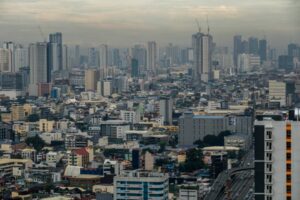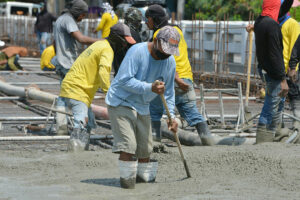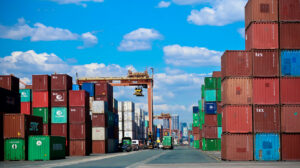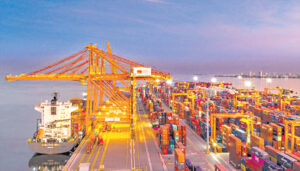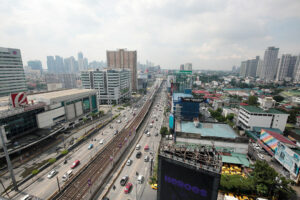The Philippine economy is at risk of further falling behind its Southeast Asian neighbors, an economist said, noting it may take two years to catch up with Vietnam and up to 70 years to catch up with Singapore.
“(T)he Philippines could find itself lagging behind if alleged public spending issues continue to divert attention and resources away from the structural reforms needed to accelerate economic development,” Bank of the Philippine Islands (BPI) Lead Economist Emilio S. Neri, Jr. said in a commentary on Wednesday.
In the third quarter, Philippine gross domestic product (GDP) grew by 4%, its slowest pace in over four years amid slower household and public infrastructure spending as the flood control scandal dampened investor and con-sumer sentiment.
In the nine months to September, GDP growth averaged 5%, putting the government’s 5.5%-6.5% full-year growth target further out of reach.
“The Philippine economy is growing, but not enough to close the economic gap with other countries,” Mr. Neri said.
He noted the Philippine GDP per capita is lower compared with other economies in the region. Citing International Monetary Fund (IMF) data, he said the Philippines’ GDP per capita stood at $4,078 in 2024.
“At the current growth rate, it would take the Philippines two years to catch up with the GDP per capita of Vietnam, 4 years with Indonesia, 14 years with Thailand, 26 years with Malaysia, and 70 years with Singapore, assuming their incomes remain stagnant. In reality, their GDP per capita continues to grow, which means the gap could persist or even widen,” Mr. Neri said.
The Philippines lagged behind Singapore which had a GDP per capita of $90,674 in 2024, followed by South Korea ($36,128), Japan ($32,498), China ($13,312), Malaysia ($12,540), Thailand ($7,491), Indonesia ($4,958) and Vietnam ($4,535).
“Before the pandemic, the Philippines had a higher GDP per capita than Vietnam, but has since been overtaken. At current trends, it would take the Philippines two years to catch up with Vietnam, but that gap could increase to 13 years by 2044,” Mr. Neri said.
The BPI economist said the Philippines needs structural reforms to accelerate growth in order to close the widening gap with its neighbors.
“The current economic model of the country is not enough, as shown by the country’s inability to grow faster than 6% in recent years,” he said.
Mr. Neri said the economy has been “too reliant” on consumer spending, driven by overseas Filipino worker (OFW) remittances and the business process outsourcing industry.
“There is a need to diversify its sources of growth. The economy must improve in terms of production, especially in agriculture and manufacturing, as they will allow the economy to be more self-sufficient and to reach foreign markets. These industries have been critical to Vietnam’s success and could play a similar role for the Philippines,” he said.
However, Mr. Neri said implementing these reforms will be hard if the government lacks focus.
“Public spending issues divert fiscal resources and policymaking focus away from long-term development priorities. Efforts to strengthen safeguards against potential issues in government spending are essential, enabling the country to work on structural reforms that could improve the economy,” he said.
Mr. Neri said the Philippines will likely depend on monetary policy to sustain economic growth, with the Bangko Sentral ng Pilipinas (BSP) expected to continue rate cuts until mid-2026.
“Excessive rate cuts could lead to an overshoot, as monetary policy might be used disproportionately to compensate for weaker growth performance,” he said.
“While inflation is expected to remain manageable in the coming months, there is a significant chance it will move higher in 2026 as favorable base effects from rice prices fade. If the BSP cuts its rates too much and inflationary pressures suddenly rise, the central bank could be forced to reverse course abruptly, hiking rates faster than the ideal pace,” Mr. Neri added.
In October, the BSP trimmed the key policy rate by 25 basis points (bps) to a three-year low of 4.75%, citing benign inflation and downbeat business sentiment amid the flood control mess. It has now slashed borrowing costs by a total of 175 bps since it began its easing cycle in August 2024.
BSP Governor Eli M. Remolona, Jr. has also hinted at potentially two more 25-bp cuts at the Monetary Board’s last meeting this year on Dec. 11 and by early next year to support the economy.
MORE DOVISH?
Meanwhile, the BSP could deliver more interest rate cuts than expected as fiscal tightening due to the flood control scandal dampened economic growth, Nomura Global Markets Research said.
In its latest Global Economic Outlook Monthly, Nomura said the substantial impact of the graft scandal could prompt the BSP to lower borrowing costs by over 50 bps until next year.
“The inadvertent fiscal tightening due to the ongoing corruption controversy is substantial, hurting short-run growth prospects materially and keeping BSP dovish for longer,” Nomura research analysts Euben Paracuelles and Yiru Chen said.
They noted that a sharper global growth slowdown and a slower resolution of the corruption controversy pose downside risks to growth.
GlobalSource Partners Country Analyst Diwa C. Guinigundo said the latest growth print and stable inflation should support the monetary authorities’ dovish stance.
“This clear growth deceleration, coupled with steady headline inflation at 1.7% in both September and October, strengthens the case for the Bangko Sentral ng Pilipinas to sustain a monetary accommodation stance through late 2025 and possibly into early 2026,” Mr. Guinigundo said in a note dated Nov. 11.
Headline inflation steadied month on month at 1.7% in October, but eased from 2.3% a year ago. This brought the 10-month inflation to average 1.7%, matching the BSP’s full-year forecast.
“Seasonal holiday spending and remittance-driven demand could nudge prices up, but any uptick may be tempered by available monetary policy space — possibly leaving room for another rate cut,” Mr. Guinigundo said.
However, Nomura said emerging risks could push the BSP to reduce interest rates more than it has indicated.
“BSP sounded more dovish and signaled that it sees scope for a more accommodative stance, citing the need to support domestic demand after the corruption scandal was exposed,” Mr. Paracuelles and Ms. Chen said.
Meanwhile, Mr. Guinigundo said growing political instability, weak stock market and peso, as well as declining foreign investments complicate the BSP’s policy path.
Mr. Guinigundo noted that “premature or excessive” monetary policy easing could lead to capital outflows and further weaken the local currency.
“In this environment, a measured pause in policy rates could send a constructive signal — that the BSP remains data-driven, vigilant, and risk-conscious, choosing to balance growth support with the need to preserve macroeconomic credibility and market confidence,” he added. — KKC


